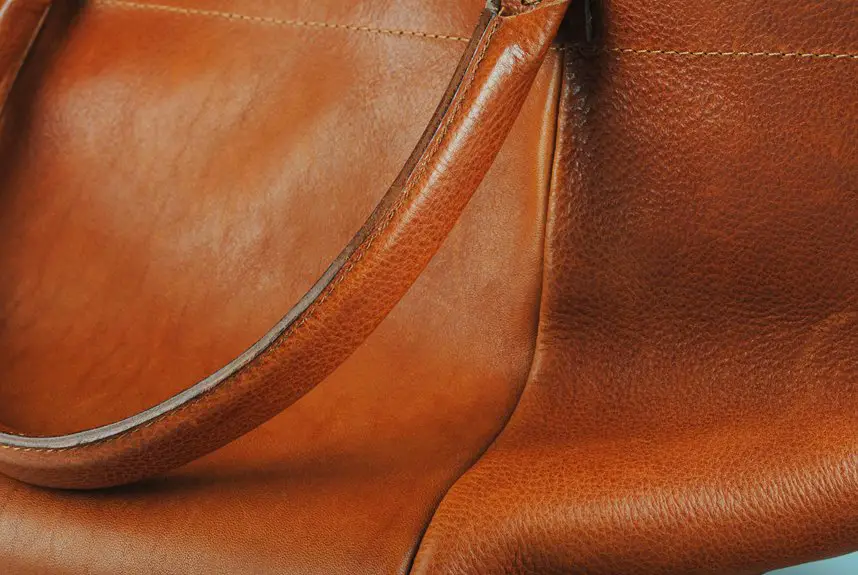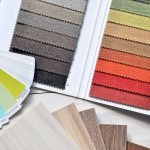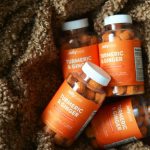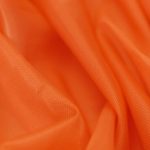You’ll find nonwoven tote bags made mainly from polypropylene, a lightweight, durable, and water-resistant material that holds up well for everyday use. Different types like spunbond and needle-punched nonwoven offer varying strength levels, so heavier loads need sturdier options. While these bags last long and reduce waste, they’re not biodegradable, so proper care—like gentle washing and air drying—helps extend their lifespan. Keep exploring to uncover more about materials, durability, and eco-friendly benefits.
Table of Contents
Key Takeaways
- Nonwoven tote bags are made from bonded fibers like polypropylene, offering lightweight, durable, and tear-resistant alternatives to woven fabrics.
- Common materials include polypropylene for affordability and water resistance, polyester for strength, and cotton blends for a natural feel.
- Durability varies: spunbond polypropylene is strong for daily use, needle-punched nonwoven handles heavier loads, and SMS offers the highest resilience.
- Environmental impact includes non-biodegradability and limited recycling, but longer bag lifespan and proper care reduce waste and support sustainability.
- Proper cleaning with mild soap, air drying, and storing away from sunlight prolongs nonwoven tote bags’ durability and performance.
Understanding Nonwoven Fabric Technology
Nonwoven fabric technology forms the backbone of nonwoven tote bags, giving them their unique strength and versatility.
When you look closer, you’ll see these fabrics aren’t woven like traditional textiles. Instead, fibers bond together through mechanical, thermal, or chemical processes, creating a durable yet lightweight material.
Fibers fuse via mechanical, thermal, or chemical means, forming a strong yet lightweight fabric unlike traditional weaving.
This method lets manufacturers produce fabric quickly and efficiently, often with fewer resources. You’ll notice that nonwoven fabrics resist tearing and hold their shape well, making your tote reliable for everyday use.
Plus, this technology allows for customization in thickness, texture, and strength, so your tote can be designed for specific needs.
Understanding this process helps you appreciate why nonwoven tote bags offer such practical benefits.
Common Materials Used in Nonwoven Tote Bags
Choosing the right material affects your tote bag’s durability, appearance, and eco-friendliness. When selecting a nonwoven tote bag, you’ll encounter several common materials, each offering unique benefits.
These materials influence how sturdy your bag feels and how it handles daily use.
Here are the most common materials used in nonwoven tote bags:
- Polypropylene: Lightweight and cost-effective, ideal for everyday use.
- Polyester: Offers enhanced strength and resistance to wear.
- Cotton Nonwoven Blends: Provide a natural feel with added durability.
- Recycled Fibers: Eco-friendly options that reduce environmental impact.
Understanding these materials helps you pick a tote bag that meets your needs, whether you prioritize strength, sustainability, or style.
Benefits of Polypropylene in Nonwoven Bags
When you choose polypropylene for your nonwoven tote bags, you get a lightweight yet strong material that handles daily use with ease.
It’s naturally water-resistant, keeping your items protected from spills and rain.
Plus, it won’t break the bank, making it a smart and budget-friendly choice.
Lightweight and Strong
Although you mightn’t notice it at first glance, polypropylene gives tote bags an impressive balance of lightness and strength. This material lets you carry your essentials without feeling weighed down, making it perfect for daily use.
You’ll appreciate how durable these bags are, standing up to regular wear and tear without losing shape. Plus, they handle heavy loads better than many alternatives, so you can trust them for groceries or books.
Here’s what makes polypropylene stand out:
- Lightweight design reduces carrying fatigue
- High tensile strength resists stretching and tearing
- Maintains shape even under pressure
- Durable enough for repeated use
With these advantages, you get a tote that’s both easy to carry and tough enough to last.
Water Resistance Benefits
Polypropylene’s water resistance makes nonwoven tote bags ideal for everyday use, especially in unpredictable weather.
When you carry groceries or personal items, you won’t have to worry about moisture seeping through and damaging your belongings. This material repels water effectively, keeping the bag lightweight even after exposure to rain or spills.
Unlike cotton or paper bags that absorb water and weaken, polypropylene maintains its strength and shape, ensuring durability over time. You can confidently use these bags for shopping, beach trips, or errands without stressing over wet conditions.
Plus, the water-resistant surface makes cleaning simple—just wipe off any dirt or liquid, and the bag looks good as new.
With polypropylene, you get a practical, reliable tote that handles wet environments with ease.
Cost-Effective Material
The water resistance of nonwoven tote bags not only protects your items but also keeps maintenance costs low.
One of the key reasons these bags remain affordable is their primary material: polypropylene. This synthetic polymer strikes a perfect balance between cost and performance, making it ideal for everyday use.
When you choose polypropylene nonwoven bags, you benefit from:
- Low production costs, which translate to budget-friendly prices for you
- Lightweight design, reducing shipping expenses
- Durability that withstands repeated use without breaking down
- Easy recyclability, supporting sustainable practices without extra fees
Comparing Durability Across Different Nonwoven Materials
You’ll notice that different nonwoven materials vary in strength, which directly affects their durability.
Some fabrics resist wear and tear better, making them ideal for heavy use.
Understanding these differences helps you choose the best tote bag for your needs.
Material Strength Differences
Understanding material strength plays a crucial role when choosing nonwoven tote bags, especially if you need one that can handle heavier loads or frequent use.
Different nonwoven materials offer varying levels of tensile strength, which affects how much weight the bag can carry without tearing or stretching.
Here’s a quick comparison to help you pick the right material:
- Spunbond Polypropylene: Lightweight yet strong, ideal for everyday shopping.
- Meltblown Nonwoven: Less durable, mainly used for filtration rather than carrying heavy items.
- Needle-Punched Nonwoven: Offers excellent strength and durability, great for heavier loads.
- SMS (Spunbond-Meltblown-Spunbond): Combines layers for superior strength and resilience.
Wear Resistance Comparison
Material strength sets the foundation, but wear resistance determines how well a nonwoven tote bag holds up over time and repeated use.
When comparing materials, spunbond polypropylene offers excellent abrasion resistance, making it a top choice if you want a bag that withstands rough handling.
In contrast, meltblown fabrics, while lightweight and breathable, generally wear out faster under friction.
Needle-punched nonwovens strike a balance; their dense structure resists tearing but can show signs of wear sooner than spunbond.
If you frequently carry heavy or sharp items, you’ll appreciate a bag with higher wear resistance like those made from laminated spunbond nonwovens.
Understanding these differences helps you pick a tote that fits your lifestyle and guarantees durability where it matters most.
Environmental Impact of Nonwoven Tote Bags
Although nonwoven tote bags offer a reusable alternative to single-use plastics, they come with their own environmental trade-offs that you should consider.
These bags are typically made from polypropylene, a type of plastic derived from fossil fuels. While they reduce single-use plastic waste, their production still consumes energy and resources.
When disposed of improperly, nonwoven bags can contribute to microplastic pollution. Recycling options for these bags are limited, which means many end up in landfills.
Keep these points in mind:
- Made from non-biodegradable polypropylene
- Production involves fossil fuel consumption
- Limited recycling infrastructure available
- Potential to release microplastics if not managed correctly
Understanding these impacts helps you make informed choices about using nonwoven tote bags responsibly.
Tips for Maintaining and Extending Bag Lifespan
To get the most out of your nonwoven tote bags, you’ll want to care for them properly and use them wisely.
Avoid overloading your bag beyond its weight capacity to prevent tears or stretching.
When cleaning, wipe spills immediately with a damp cloth or hand wash gently using mild soap and cold water.
Skip the dryer; instead, air dry your bag to maintain its shape and strength.
Air drying your tote helps preserve its shape and durability better than using a dryer.
Store your tote in a cool, dry place away from direct sunlight to prevent fading and material breakdown.
By handling your bags with care, you’ll extend their lifespan, reduce waste, and enjoy their convenience longer.
Frequently Asked Questions
Can Nonwoven Tote Bags Be Customized With Logos or Designs?
Imagine your tote bag as a blank canvas—yes, you can customize nonwoven totes with logos or designs! Many businesses boost brand visibility this way, turning simple bags into walking billboards for your message.
Are Nonwoven Tote Bags Waterproof or Water-Resistant?
Nonwoven tote bags aren’t fully waterproof, but they’re water-resistant enough to protect your items from light rain or spills. You shouldn’t rely on them in heavy rain, though, since water can eventually seep through.
How Much Weight Can a Typical Nonwoven Tote Bag Hold?
Ever wonder if your tote can carry the world? Typically, nonwoven tote bags hold around 10 to 15 pounds. You’ll find them sturdy enough for groceries or books, but heavy loads might strain their seams.
Can Nonwoven Tote Bags Be Recycled After Use?
You can recycle nonwoven tote bags, but it depends on local facilities. Since they’re made from polypropylene, some centers accept them, while others don’t. Always check your area’s recycling guidelines before tossing them in.
What Are the Common Sizes Available for Nonwoven Tote Bags?
You’ll find nonwoven tote bags commonly sized around 13×15 inches, 12×14 inches, or 14×16 inches. These sizes fit everyday needs, whether for groceries, events, or casual carrying, offering versatility and convenience.
- Recycling Nonwoven Fabrics: Is It Possible? - July 11, 2025
- Recycling Nonwoven Fabrics: Is It Possible? - July 11, 2025
- Recycling Nonwoven Fabrics: Is It Possible? - July 11, 2025







